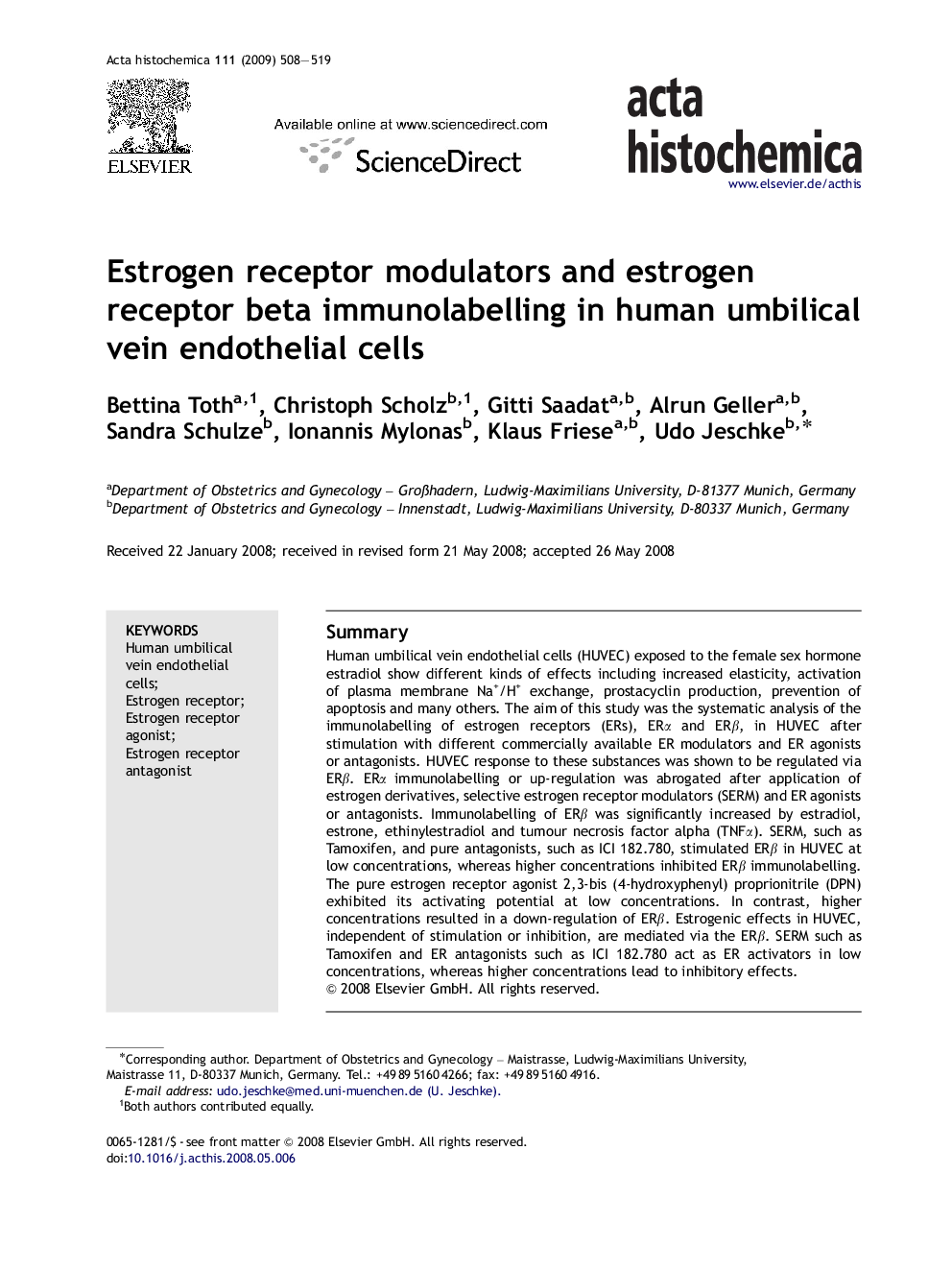| Article ID | Journal | Published Year | Pages | File Type |
|---|---|---|---|---|
| 1924144 | Acta Histochemica | 2009 | 12 Pages |
Abstract
Human umbilical vein endothelial cells (HUVEC) exposed to the female sex hormone estradiol show different kinds of effects including increased elasticity, activation of plasma membrane Na+/H+ exchange, prostacyclin production, prevention of apoptosis and many others. The aim of this study was the systematic analysis of the immunolabelling of estrogen receptors (ERs), ERα and ERβ, in HUVEC after stimulation with different commercially available ER modulators and ER agonists or antagonists. HUVEC response to these substances was shown to be regulated via ERβ. ERα immunolabelling or up-regulation was abrogated after application of estrogen derivatives, selective estrogen receptor modulators (SERM) and ER agonists or antagonists. Immunolabelling of ERβ was significantly increased by estradiol, estrone, ethinylestradiol and tumour necrosis factor alpha (TNFα). SERM, such as Tamoxifen, and pure antagonists, such as ICI 182.780, stimulated ERβ in HUVEC at low concentrations, whereas higher concentrations inhibited ERβ immunolabelling. The pure estrogen receptor agonist 2,3-bis (4-hydroxyphenyl) proprionitrile (DPN) exhibited its activating potential at low concentrations. In contrast, higher concentrations resulted in a down-regulation of ERβ. Estrogenic effects in HUVEC, independent of stimulation or inhibition, are mediated via the ERβ. SERM such as Tamoxifen and ER antagonists such as ICI 182.780 act as ER activators in low concentrations, whereas higher concentrations lead to inhibitory effects.
Related Topics
Life Sciences
Biochemistry, Genetics and Molecular Biology
Biochemistry
Authors
Bettina Toth, Christoph Scholz, Gitti Saadat, Alrun Geller, Sandra Schulze, Ionannis Mylonas, Klaus Friese, Udo Jeschke,
